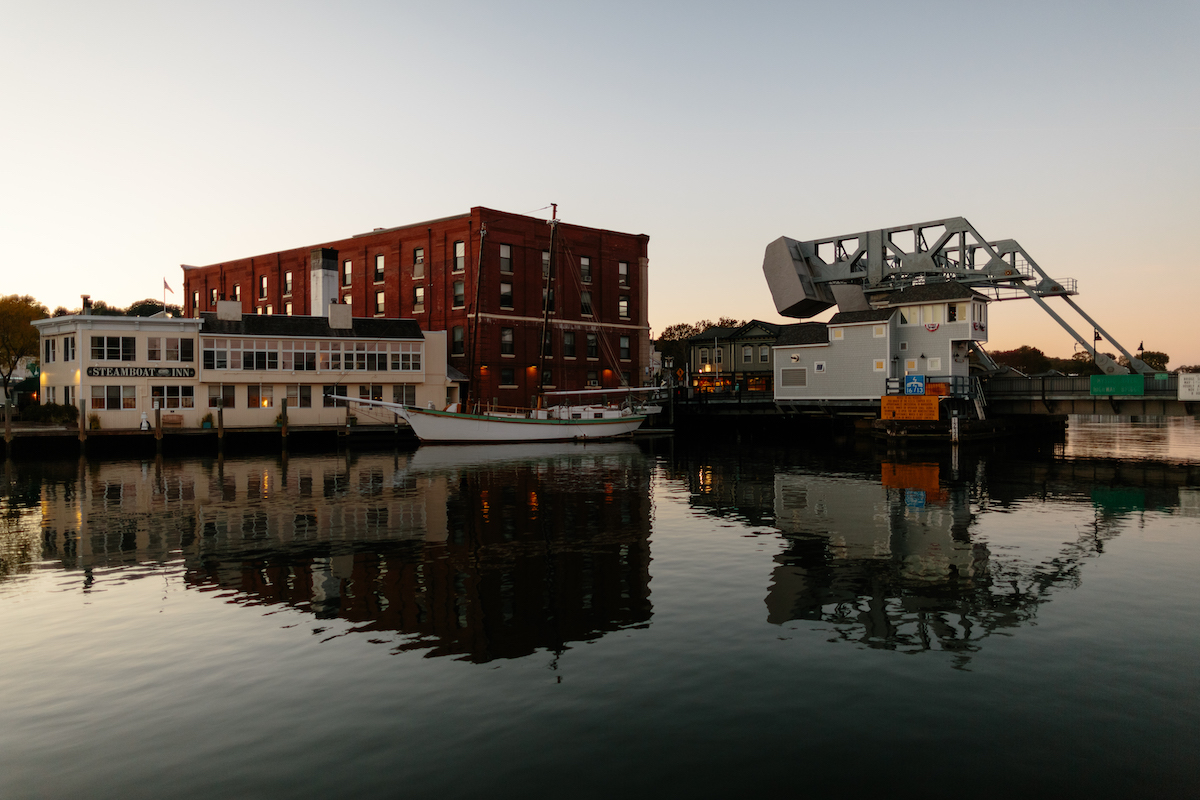PROJECTS, STRATEGY & ACTION PLAN
GOALS & OBJECTIVES

GOAL 1 -Support People
Objective: Ensure there are equitable opportunities, programs and quality
housing at accessible rates in place so that existing residents can make decisions
that will positively affect their lives, and develop strategies to attract new,
civically-engaged people who will participate in the workforce or start new
employer businesses.
STRATEGIC ACTIONS
A. Ensure and promote initiatives that grow and enhance the regional workforce.
- Promote extended pipelines and pathways for a variety of industries, such as healthcare, from the primary school to higher education and continuing education levels.
- Develop employer-informed programs that scaffold skills to various levels of expertise.
- Support the adaptation of EWIB’s Manufacturing Pipeline Initiative to an emerging cluster and ensure this promotes regional resilience with the diversification of industry and talent.
- Promote “forward-thinking” talent development solutions and invest in a proven model for promoting an emerging industry such as coding education, which is the foundation of computer programming. Talent development, retention and attraction are key for each focus area.
- Facilitate regional support organizations that are working in tandem with EWIB and employers to develop leading programs prioritizing childcare and transportation as well as services to support a wide variety of worker needs.
- Focus efforts on creating opportunities for residents in distressed areas and historically marginalized populations to increase their incomes.
- Provide support for micro-enterprises as a pathway out of poverty, especially in distressed municipalities.
B. Identify strategies to increase access to affordable housing across the region.
- Convene a regional planning effort designed to inform a comprehensive set of
interventions that remove the regulatory barriers to building more multi-family
housing. - Convene municipalities and adjacent partners to vet Connecticut’s land banking
roles to promote property re-use (tool for blight reduction). - Work to increase property redevelopment financing instruments.
C. Research and develop programs to attract and retain younger
people.
1. Research and conduct a feasibility study for the establishment of the
Southeastern Connecticut Center for New Americans.
2. Work with workforce partners to conduct a workforce assessment survey to inform workforce attraction and retention policies and programs.
3. Retain and attract a working age, diverse population.
4. Develop incentives to retain college graduates.

D. Enhance the quality of life in urban centers, rural areas and suburban communities by ensuring adequate housing, access to services, and support for individuals, families and businesses living and operating in the region.
According to the SWOT analysis, quality of life in the region is highly regarded. Areas characterized as urban, suburban, and rural are all within a very short distance of each other. There are miles of shoreline and a plethora of outdoor activities. During the pandemic, the region gained many new residents who left larger metropolitan areas to gain access to a different quality of life.
1. Continue to support and convene stakeholders to drive the multi-dimensional Offshore Wind industry, building on the USEDA Phase 2 Build Back Better Regional Challenge Coalition.
2. Create an intensive accelerator program or other early stage firm development model to help nurture the growth of promising early stage firms, initially in the alternative energy space leveraging seCTerRise funding which aligns with Connecticut Innovations and UConn’s Technology Incubation Program (TIP).
3. Support the use of Clean Energy assessment programs and other tools to provide private commercial businesses incentives for transitioning to or deploying renewable energy solutions.
E. Create regionally focused content celebrating the diversity of the region: rural, urban, agricultural, maritime.
1. Support creative economy projects, downtowns and vibrant communities that appeal to young workers and families.
2. Create the “I am Southeastern CT” campaign which highlights people who work in a wide array of vocations and the high quality of life enjoyed in Southeastern CT.
![]()
GOAL 2 – Build Capacity
Objective: Build economic development capacity and awareness throughout the region so it can become more resilient, equitable, attractive, wealthy and competitive. EDA defines “Economic Development Capacity Building” as “developing or improving community assets that businesses need to succeed.” “Capacity” here is separated into four categories: 1) Economic Development Knowledge Capacity, 2) Infrastructure, 3) Financial Instruments, and 4) Energy.
STRATEGIC ACTIONS
A. Increase awareness, talent, and capacity for economic development within the region.
1. Advocate for grant writing and grants management training for public sector projects.
2. Encourage civil service (governmental and nonprofit) talent attraction and career growth strategies.
3. Create a regional economic development dashboard to better communicate and measure economic development impact.
4. Create an economic development intern program.
5. Convene consortia of organizations and municipalities to leverage technical assistance for increased capacity with shared staff positions in common disciplines with demand.
6. Develop strategies to expand seCTer’s deliberate and active outreach to new organizations not currently within seCTer’s network of partnerships with the intent of hearing all voices within the region.
7. Work to get millennials and under-represented populations involved with Chambers of Commerce, civic organizations and local government, and be open to new/emerging platforms for engagement.
B. Capitalize on funding opportunities to improve infrastructure critical to sustained growth and resiliency.
1. Support the development of a central regional resilience office that focuses on evaluating the alignment of funding opportunities, plans, regulations and policies in the region regarding infrastructure.
2. Provide funding to businesses in the form of grants.
3. Identify and improve underutilized properties that can be activated for positive economic uses, and help identify grants and programs to mitigate blight.
4. Seek transformational funding by responding to EDA opportunities such as Regional Technology and Innovation Hubs or the Build Back Better Regional Challenge.
C. Increase portfolio of potential financial instruments that can be leveraged in the region to advance projects.
1. Conduct feasibility study of financial tools currently available and identify gaps which negatively impact private development of housing or industry.
2. Craft a New Markets Tax Credit (NMTC) joint venture with an established Community Development Financial Institution (CDFI) with a demonstrated history of achievement in securing and placing NMTCs.
3. Create awareness of existing programs throughout the region that will aid in development activity.
4. Convene a financing consortium to help identify opportunities for synergy and greater leverage, and foster regional collaboration in pursuing competitive resources from public and philanthropic entities.

D. Grow the Energy and Environment Clusters.
According to the SWOT analysis, quality of life in the region is highly regarded. Areas characterized as urban, suburban, and rural are all within a very short distance of each other. There are miles of shoreline and a plethora of outdoor activities. During the pandemic, the region gained many new residents who left larger metropolitan areas to gain access to a different quality of life.
1. Continue to support and convene stakeholders to drive the multi-dimensional Offshore Wind industry, building on the USEDA Phase 2 Build Back Better Regional Challenge Coalition.
2. Create an intensive accelerator program or other early stage firm development model to help nurture the growth of promising early stage firms, initially in the alternative energy space leveraging seCTerRise funding which aligns with Connecticut Innovations and UConn’s Technology Incubation Program (TIP).
3. Support the use of Clean Energy assessment programs and other tools to provide private commercial businesses incentives for transitioning to or deploying renewable energy solutions.
![]()
GOAL 3 – Advance Growth and Sustainability
Objective: Uplift the region’s ability to withstand national or international economic shocks, loss of significant employers, or climate-related shocks by making the region more aware of risk and increasing its ability to respond.
STRATEGIC ACTIONS
A. Strengthen the resilience of the region’s businesses to withstand and respond to external shocks.
1. Strengthen local capacity by expanding capital finance and technical assistance resources for small businesses and entrepreneurs.
2. Develop and implement regional business retention and expansion (BRE) programs, and provide workshops to municipalities on local BRE best practices.
3. Institute supply chain vulnerability assessment tools for small businesses.
4. Facilitate partnerships between/among regional support organizations to support innovation and entrepreneurship as a strategy for workforce development and personal resilience.
5. Provide existing and prospective business owners with easy access to information on available resources, regulatory requirements, transportation, workforce training and housing, and incentives.
B. Strengthen the region’s ability to confront and thrive in the midst of climate and other external shocks.
1. Advocate for a regional sea level rise assessment study and publish findings.
2. Conduct study/survey to understand the impacts of extreme events on communities.
3. Examine and publish best practices for regional energy diversification and independence.
4. Develop a scorecard to help assess regional business resilience so that annual progress can be measured.
5. Identify the policy barriers that lead to certain groups not having access to funding and suffering economic hardship due to lack of housing, loss of work, and supply chain constraints.
C. Foster an environment that provides opportunities for cross-sector interaction resulting in proactive strategies to diversify the regional economy.
1. Launch program to foster entrepreneurial early stage firms in high wage/high growth sectors.
2. Create and establish best practices for economic development gardening.
3. Create network of entrepreneurial support organizations.
4. Continue to facilitate industry-driven partnerships among regional employers, organized labor, education/training providers, and other stakeholders to facilitate the “rebalancing” of the regional economy to meet manufacturing and healthcare openings.
5. Seek funding to catalyze innovation-based economic development projects such as the blue economy, artificial intelligence and robotics.
D. Increase personal and economic resilience.
1. Create a regional environment that is conducive and supportive of economic mobility.
2. Provide access to resources and tools that will facilitate personal and economic resilience.
3. Address cultural, linguistic and/or regulatory barriers to help individuals integrate into the local economy.
